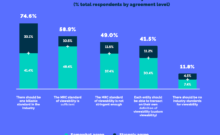At last month’s Programmatic Summit in Sydney, a panel tackled the topic of “Kill the metrics that don’t matter”. At one point, the moderator asked each participant to nominate the two metrics they would “kill”.
One of the responses was “viewability and fraud”. I fell off my chair. The panelist justified their answer by saying viewability should be a given. But is it?
Viewability verification has been a standard practice for three years now, so it’s a good time to step back and look at what we’ve learned from it and how it can be used to better understand channel impact in an environment where the user is in control.
Viewability is not a given
Unlike other mediums, the internet is a world in itself: a world where the user is in control. Where people can scroll, flick, skip, move on. Where people choose to visit sites that carry no advertising, or use ad blockers to avoid having ads.
And on top of that, you can hack the system and make fake websites and fake users. Imagine if there we so many TV channels that you could create fake ones and nobody would know.
Read More at The Original Article: mumbrella.com.au









